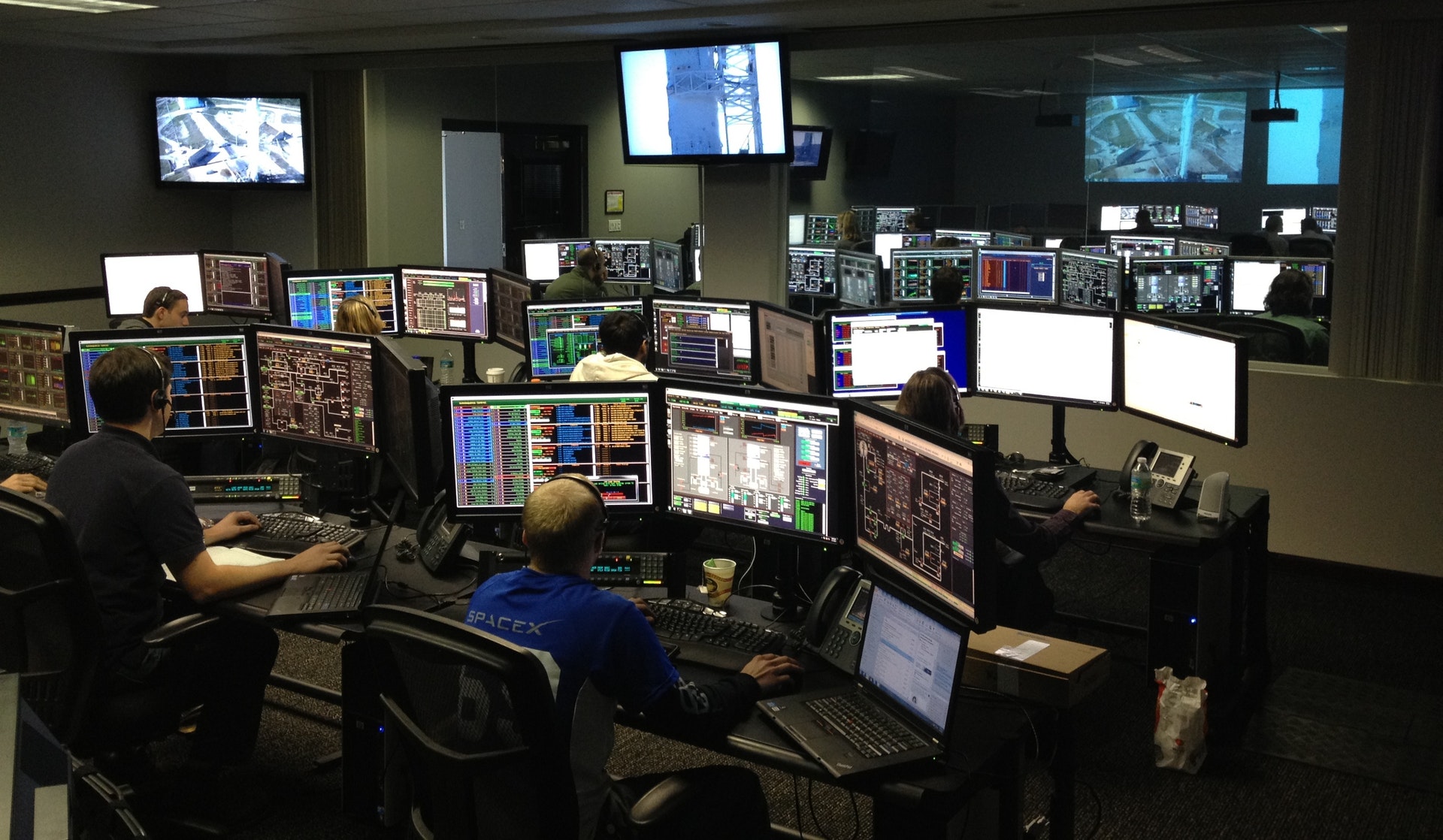A Rural Startup
Hi, with this article, I wanted to show you some of the "behind-the-scene" of organizing and founding my small business, Simitless. Of course, Simitless is not unique in every way. Several companies offer similar services. “no-code” software platforms have grown and developed considerably in recent years. Here it is.

Simitless is both a software platform and a company that I created. It is a labor of love, born of my dream. Who is this “I”? I am François, founder of the said company, creator of the software, and author of these lines. And my labor of love - Simitless - is a new kind of data system that uses modern computer and web technology to make data manipulation simple, intuitive, and human.
A special case
So here is a somewhat “particular” article. “Particular”, because I want to speak to you directly. These words I am writing are my own. I have thought about them, arranged and rearranged them, and finally put them together here for you. I wanted to show you the "behind-the-scene" of organizing and founding my small business, Simitless. Of course, Simitless is not unique in every way. Several companies offer similar services. The tools enabling the creation of custom "no-code" applications - “no-code” implying that you do not have to write a line of code yourself - have grown and developed considerably in recent years.
Problems
And although I could see these new tools popping up with increased intensity, I could never shake the impression that they are often poorly suited for the individual users.
The first obstacle these tools encounter lies in how they address their potential users. More often than not, these tools target a narrow category of specific users, working in and around the computer software industry (Airtable, Monday.com, ...). Potential users working in non-IT related industries, on the other hand, often find it hard to find their way around such tools without proper documentation and training.
The second obstacle is language. Usually, these tools are available only in English. An understandable choice on the part of creators, no doubt. They are trying to optimize their investment while addressing what they believe to be the largest possible public. Yet, with 95% of the world's population not using English as their primary language, and around 75% not speaking it at all, this choice automatically excludes many who could benefit from these services. The majority of well-known companies in this field have carried out fundraising campaigns of several hundreds of thousands of dollars to translate their software to thus make their tools accessible to a wider audience. In this day and age, a company should consider the interface of their software to be available in at least two to three languages if it wants to substantiate its intention to go global. In all honesty, can you expect anything less from an ambitious company if even small organizations with no substantial funding have succeeded in taking this step towards going international?
And finally, depending on how and where they position themselves, the prices charged by these platforms for their “no-code” tools are often either exorbitant or simply not sustainable. If a company takes up the niche of custom software development (competing with independent developers and IT services companies), chances are they will be charging exorbitant prices, e.g. €30 000 for software installing plus training fees. On the other end of the spectrum, you have companies that have benefited from a large fundraising campaign and are now aiming at bringing the prices down as much as possible. Their goal is to simply break the market by heavily subsidizing the costs of user activity - i.e. €10/month for unlimited use - to carve for themselves a position of quasi-monopoly. Once their monopoly is established, they are free to increase the fees they charge their captive users to thus generate significant added value for their investors.
Choices
Simitless is an entirely self-funded and self-built endeavor. I, François, the creator of the platform, have a personal stake in this enterprise. And I can tell you that much, it is both reassuring and frightening to have full control over your creation. Day in, day out, I find myself performing a balancing act properly allocating the limited resources at my disposal, never forgetting that the responsibility for the success or failure of my business rests only on me. But I chose to create my company precisely with this purpose: to gain independence, to be free from any investor pressure, to decide on the direction to take to best serve my customers.

Another element that pushed me to organize myself and my business in this way is my wish not to join the ranks of new big-city dwellers. The hyper-centralization of activities in urban centers can be very useful for economic development. And since our current economic organization is geared exactly towards these ends of maximizing financial development and return on investment, one does not need to wonder why the majority of individuals choose the city over the countryside. Unfortunately, what we seem to forget is the price we as humans have to pay to get ahead in this race for perpetual economic growth. So, what price do we pay? Well, for one, living in a city plagued by constant densification, we have no other choice but to endure the noise that comes with it all. I come from a village in the primarily rural department of Allier in France. In stark opposition to an urban center like Paris or Lyon, Allier suffers desertification that is felt more and more acutely year after year. And yet, Allier is a pleasant and comfortable place to live; its people are welcoming and its nature is diverse and rich. The accommodation is affordable, there is a working phone and internet connection. There is absolutely no technical reason why an online business cannot set up and prosper here.
No reason indeed, except for the current economic organization. It seems to me that despite all efforts made, the main economic activity in my part of the world comes from the pensions of retirees who were born here and never left, really. I wish and am strongly determined to play my part in reviving my region. And what I can do to achieve that goal is to help create economic activity oriented towards the outside and aimed at as many people as possible. I understand that on the one hand, the centralization of economic ecosystems can be beneficial to stimulate the interchange of ideas that could result in an innovative product or technological solution. What I have observed in practice, however, is that most of the resulting solutions create products that target audiences of an ecosystem that have few problems in life (smart hairbrushes or drone umbrellas anyone?). The craftsman who has just taken over the family business in my village and has to manage his 3 employees with an average seniority of 30 years will have little interest in and much less use for these.
True tech companies are still as challenging to launch. True tech companies I am talking about start businesses based on a technical architecture created from scratch and offer an innovative concept. The development time of these technologies is often long and requires high-level skills. More often than not, companies presenting themselves as innovative and launch a product quickly (in less than 3 months!) rely primarily on fundraising campaigns and are only “innovative” in their commercial positioning. The technology they use is not in itself innovative.
Yet, finding the necessary funds remains key to moving quickly and convincing the market. One would think that there is not a meager selection of funding sources to pick from for a young innovative startup. Disappointingly, most of them are quite difficult if not impossible to obtain, especially if you are from a modest background, with limited self-funding, and no access to “love-money”. For example, your project must necessarily fit a specific box with a corresponding and well-established business models. What my experience has taught me if one is hoping to get some funding one must create a company that is based on innovation that does not need research and development, which is perceived as too risky. Sounds… exactly how research and development work, right? Public funding, on the other hand, often kicks in too late and only finances the elements which are not, in my opinion, essential to staring up a startup (i.e. dealing with intellectual property regulations, hiring a chartered accountant to confirm the validity of an already existing business plan as it is necessary to have one to apply for any sort of funding, etc.).
And so one arrives at the best and only kind of help a public servant is ready to give because they do not want to get themselves in a pickle trying to secure public funding for your project - a piece of advice! “Try 'crude-fonding',” they kept telling me, in their best French accent. Crowd-funding has become a real and legitimate alternative to the commitment of public bodies to help fund company “creation”. Indeed, it is much less risky to associate political and monetary capital with a project that is already a success.
As things stand today for most startups, fundraising has become a golden cage. Investors bring money to the table with one single objective - a more or less short-term return on their investment. Unless you are lucky enough to find that rare gem of an investor committed to the idea of creating a responsible business, you will be forced to follow the beaten path of the age-old strategy of entering the market as quickly as possible to simply sell, sell, sell. And this strategy leads many entrepreneurs to start selling impossible services or products that do not exist, promising wonders to users who will inevitably be disappointed. (Check out the debacle around the Smart cooler, for example)
Solutions
I decided to go a different way with Simitless, renouncing rapid development at all costs and loss of control. With only little personal funding available, I started out by eliminating all the expenses I possibly could. The trade-off was, of course, the substantial increase in time investment that I allocated to working on my project.
Another trade-off was, as a lot of you could imagine, the lack of income as I could not pay myself a salary when I just started out. Yet, I was lucky enough to have a roof over my head as a relative of mine had an empty house that I could stay at in return for the maintenance services I could provide to keep the house in good condition. To put food on the table, I started gardening, thus developing a great deal of autonomy. Although such a setup may seem idyllic to young urbanites toying with the idea to turn their back on the city and although I, indeed, was lucky enough to have made such an arrangement, it does come with its own downsides. One of them being that I had to put my life on hold to be able to pursue this project. My dedication to the project, the substantial increase in my work hours, and the relocation from a medium-sized city to a new rural area have meant that we no longer saw our friends, visited our families as often as before, and gave up any and all luxury for the 6 years that it took the project to take roots.
Cutting expenses as much as possible has pushed me to learn to do things myself, it has taught me how to manage daily life with what I already have. Be it gardening or car maintenance, managing servers, or translating the interface, writing blog posts, or engaging with people on social media, I taught myself to do it all. Want to know my secret of how to manage to always do a little more? Define procedures and, when possible, automate them! And try to reduce uncertainty in performing everyday tasks.
Let me tell you what I mean by that on the example of Simitless. I chose to maintain full control over its servers. I rented them bare, did all the initial setup and installation myself, and now I check and monitor them myself, with the help of automated systems. Time investment is indeed significant (the initial installation took several weeks to complete, now I dedicate several hours per week to server maintenance), but the cost is divided by about 8 compared to the standard practice that startups pay to rent all prearranged and managed cloud servers. The system I have implemented, on the other hand, is modular to reduce complexity. And it allows for automatic system scaling. That is, when more users connect to the platform, it ramps up to serve everyone, automatically, in a very flexible and economical way.
Flexibility was really the keyword in setting up this platform. Management systems are flexible. The design of the software is flexible. My working conditions are flexible too. Since the software is available globally, I need to be able to serve all time zones and be available for meetings at any time of the day or night. Although this flexibility can sometimes have a substantial impact on my personal life, it comes with its own set of benefits. For example, I know that I can be there for the people who matter most in my life when they need it. Moreover, in addition to being able to start working on the software that I have been dreaming of for several years, I gained the freedom to organize my work and my activities in a way that suited me best. This freedom enables me, among other things, to work more efficiently and therefore to waste less time and less resources. For instance, I no longer have to commute to an office every day. This reduced environmental impact of my activity (in terms of daily trips to the office not taken, mutualized use of servers hosted in the cloud between multiple startups in accordance with their immediate need and access to high-performance tools for small structures) alongside the emphasis I chose to place on building an innovative economic activity in a rural setting enhances the positive impact of Simitless on society and its environment.
One of the points that I have not made up my mind about yet is making the source code of the platform open. I firmly believe that to have as strong an impact on the world as possible, the software I create must be accessible to the widest range of people. In my opinion, the Simitless platform is the first platform that gives small businesses and freelancers access to tailor-made management software that until now was only available to large companies. These were the only structures that could afford to hire consultants to advise them on creating the right albeit gigantic solutions to run and manage their business effectively. Evidently, opening up the code would allow reaching more people. Yet, it comes with the cost of more time spent on writing up the code documentation (as you might know, an absolutely necessary step for an open project as opposed to a project created and managed by a single individual). If I decide to take that path of opening up the code, I would scarcely have enough time to progress on key functionalities, thus slowing down the development of the platform. (By the way, if you have an idea, an opinion, a contribution to make, do not hesitate to get in touch. Let's talk about it!)
Results
Although not free, Simitless is extremely affordable. Freelancers using the system for their client management needs are billed around €2 to €4 excluding VAT per month (which amounts to €20 to €40 per year). Keeping in mind that the software lets them save several hours of work per month, the math is not hard to figure out!
Bigger companies (5 to 10 employees) pay between €50 and €150 excluding VAT per month (or between €500 and €1500 annually). Compare it to the cost of the license of commercial management software alone that commonly exceeds €5000. And don’t forget that you would probably need to dish out some several thousand euros more to train all of your teams to use it. The best part about our billing is its flexibility. Anyone who wants to make an application can create it on the platform using the existing models and can try out all systems for free. The only restriction we apply is on the volume of data you input and the number of simultaneous user connections
This is what I call a "no-brainer pricing", i.e. pricing that is so clear-cut and affordable that it simply cannot be a barrier to purchase. Such no-brainer pricing is key to reducing the risk of adopting a software solution of the sort Simitless is providing. The other key element of the Simitless platform is its simplified adoption path. Being based in Europe, in France, and more particularly in the countryside, I understand what tranquility and privacy are. This is why Simitless does not require opening an account to try the platform. Play around with some app templates for a few days then create an account to keep the apps you have created, once you're convinced.
One of the goals of the project being to ensure a positive societal impact, Simitless offers freelancers and small businesses carefully thought-through accessibility. The focus here lies primarily on providing much-needed work and collaboration tools not only for small businesses but for the more general public.
My future plans for Simitless’ development include improving the platform’s accessibility, writing up foolproof documentation, setting up guidelines to help the majority of people to develop their autonomy, creating more complete application models for a faster start, and of course, growing the network of willing-to-help humans who could assist users in setting up their applications.









